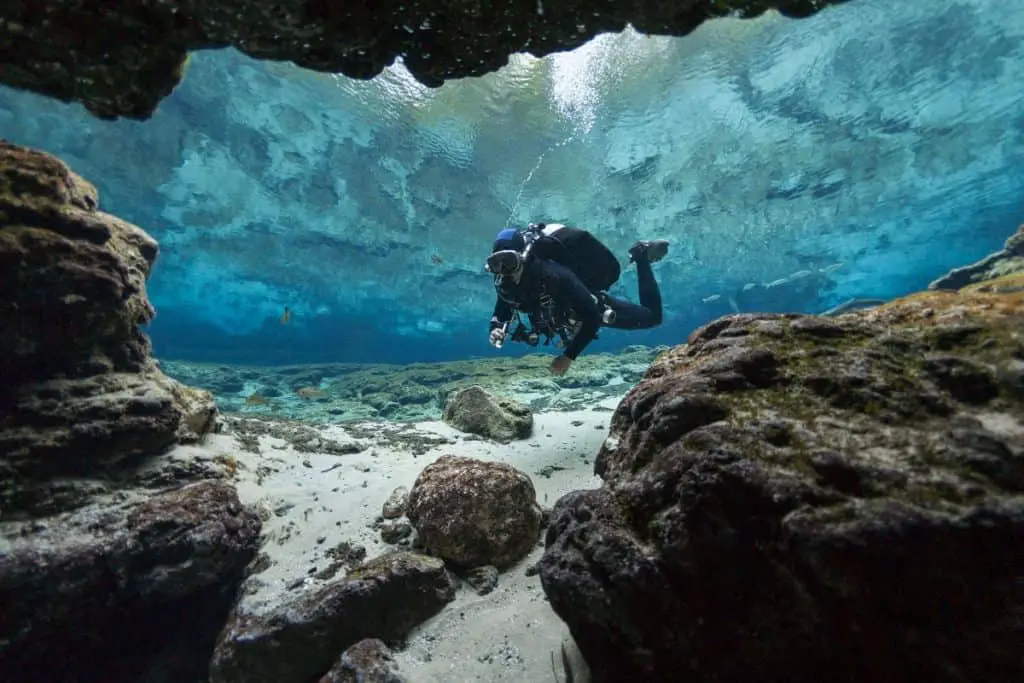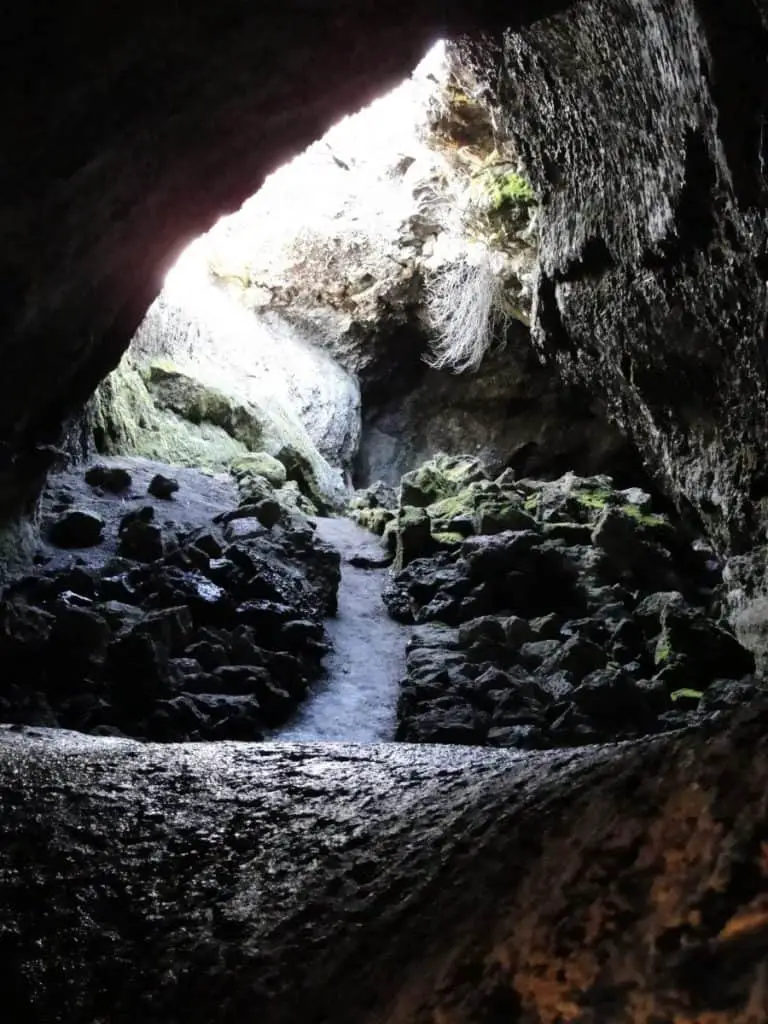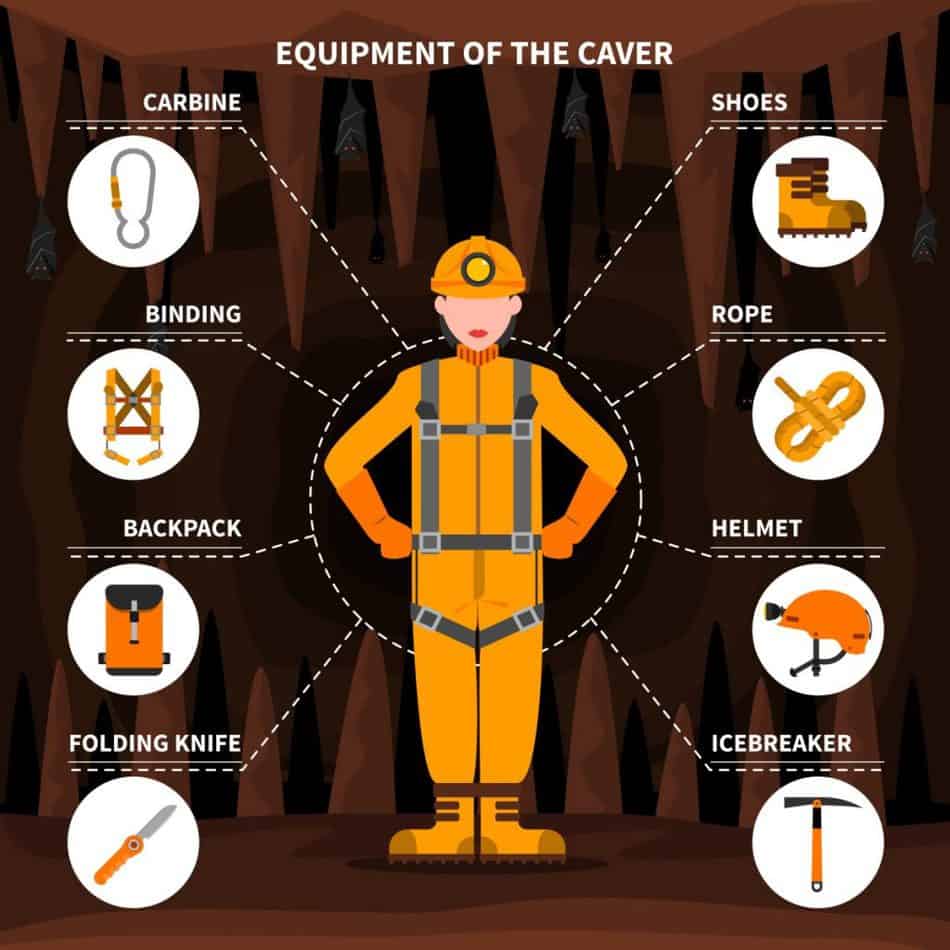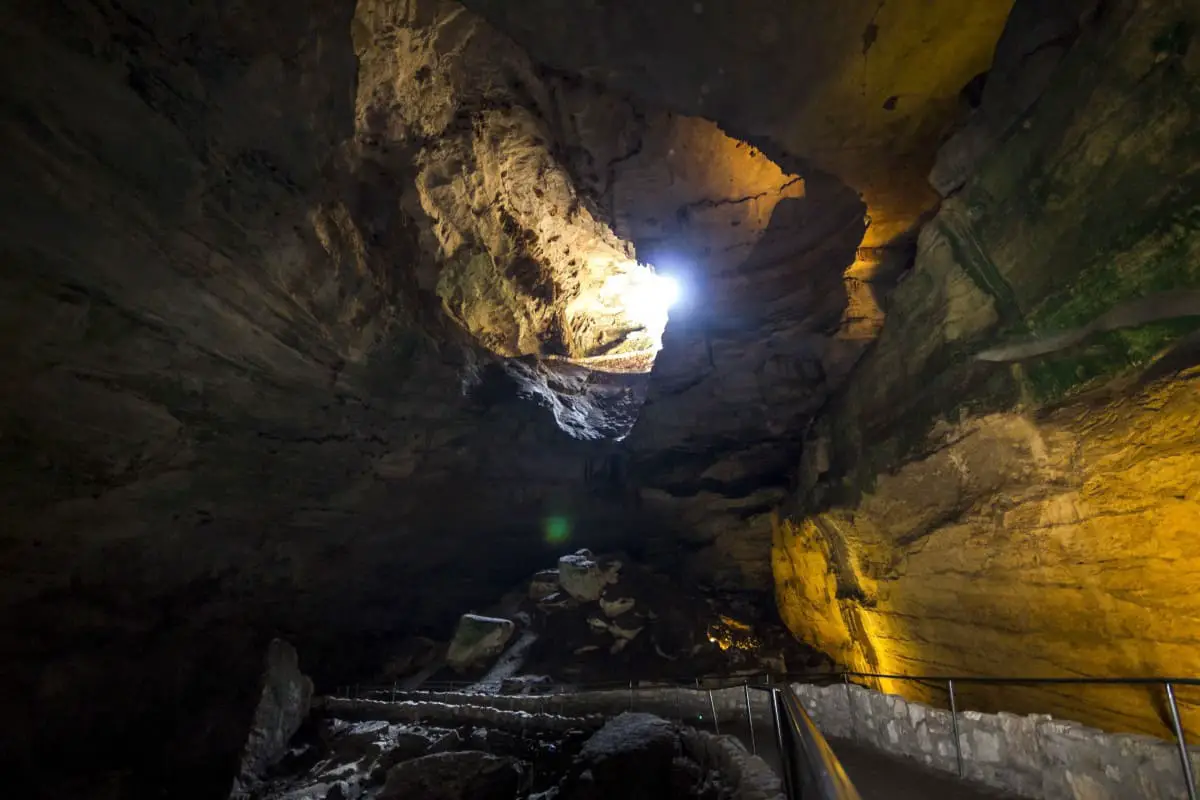Caves form when acidic water flows through and dissolves soluble rock. So is it fair to assume that all caves have an exit from where water flows out? It’s possible, but not guaranteed.
Caves don’t always have an exit. Most caves are just open voids in the ground and don’t even have an entrance. The bigger the cave, the higher the chance of there being more than one opening to enter or exit through. Caves in mountainous landscapes can have many exits on the sides of the mountain.
There are no two caves that are the same. Some have hundreds of exits while others have none.
If you’re ready to get started caving, be sure to read my Beginners Guide and check out my recommended gear section.
How Do Cave Exits Form?
Most cave openings occur when acidic water flows through and out of the cave. As underground rivers form, they can even carve away at insoluble to create an exit. Given enough time, flowing water can erode almost any type of rock.
A few other ways in which cave exits form are from earthquakes, landslides, natural structural failures and changes in ocean tides.
Flowing water
As water flows over and through caves, it slips through small spaces and erodes the rock to create new openings. Rainfall puts extra weight on the cave’s ceiling, which can cause sinkholes to occur. This is how some of the biggest cave exits are formed.

Earthquakes
Earthquakes create openings in caves as they shake the earth’s crust and rattle rocks loose. An earthquake opened up the Wonder Cave in San Marcos, Texas. Caves that are opened up without the help of water erosion are called “dry-formed caves”.
Cave openings from landslides
When rock and soil flow downhill creating a landslide, they can create cave openings in the process. As the surface of a hill gives way, it can expose the massive cavities in the earth that it was covering.
Natural structural failure
For some caves, it’s only a matter of time until it can’t support itself anymore. As the cave gets bigger, the ceiling gets bigger with less support to keep it up. This is how massive sinkholes are formed all over the world.
Commercial caves with guided tours are always monitored closely by engineers to make sure the structural integrity meets strict safety requirements.

Change in tides
Seaside caves have openings that form from the consistent rise and fall of ocean tides. It’s also possible for them to have exits further up on higher terrain, mostly because of acidic water flowing through the rocks toward the beach.
However, waves also enter and create cave exits called blowholes. As water rushes into the cave, it blasts through holes that can vary in size from pin holes to massive openings like the Kiama Blowhole in Australia that can spray 13 gallons of water 82 feet into the air.
What Is The Exit Of A Cave Called?
Cave openings have many names, yawning, mouth, and sink to name a few. The exit of a cave has no specific term because we consider any cave opening to be both an entrance and exit.
An exit where water flows out of a cave is called a “spring” or “resurgence” and an insurgence is where water flows in. But those are technical terms for the flow of water, not to describe whether an opening is an entrance or exit.
How Do You Find A Cave Exit?
Breathe deeply and remain calm. Start marking the paths with rocks or debris to help you identify where you have and haven’t been. Follow slopes and water streams upwards and choose the biggest paths first. Stop and rest with your light switched off to save batteries and to look for any other light sources to guide you out.
These short breaks will help you stay focused and keep your mind calm. It’s also a good time to listen for any other sounds without your boots crunching on gravel. Call out for help every couple of minutes with words like “I’M LOST!!!”, “HELP!!!” and “Can you hear me???”
For highly visited caves, look for the deepest trail of other cavers and follow it upward. If there are no pre-existing trails, try to find your own trails from when you entered.
Follow warmth if you can feel any. Caves are 99% cold, but sometimes you might be lucky enough to feel a warm breeze coming in from the top. If there’s a path that leads to higher temperatures, take that path.
If you feel any draft in the cave, warm or cold, move through it in the opposite direction. The draft should blow against your face.
If you see bats, you can follow them out at sundown when they go out to eat.
Try to remember what you went through to get into the cave, the width of the gaps and puddles of water. If you face an obstacle that you can’t remember seeing before, don’t go down that path. If you didn’t crawl through a puddle of water to get in, don’t do it to find your way out.
If you see any flowing water, travel in the opposite direction. There’s a higher chance of viable exit from the cave at the point where the water enters because erosion has been working on the top for the most amount of time.
If there are multiple streams, follow the biggest streams first. They are the oldest streams that have carved away the biggest openings in the cave.
None of these techniques will guarantee you find an exit, but they are your best chance at finding one if it’s there.

Is It Easy To Get Lost In A Cave?
It’s easy to get lost in a cave because there’s no natural light. Everything looks very much the same, and with many caves having extensive pathways that intersect and merge with each other, you can end up walking around in circles for hours.
Other factors like cave flooding can make it even easier to get lost or trapped in a cave. Always go caving with an experienced caver.
Conclusion
Not all caves have an exit, because most caves are sealed cavities in the ground with no wide paths leading in or out. Water can get through tiny gaps in the earth and create massive caves without causing large tunnels in and out of the cave.
New cave exits open up all the time as water erodes the ground and soluble rock dissolves. In some cases, people drill into caves to gain access and use the same hole to get back out.
Whether it’s natural or man-made, the best chance at getting out of a cave is through the opening you got in from.

When you’re ready to get started caving, be sure to read my Beginners Guide and check out my recommended gear section.

